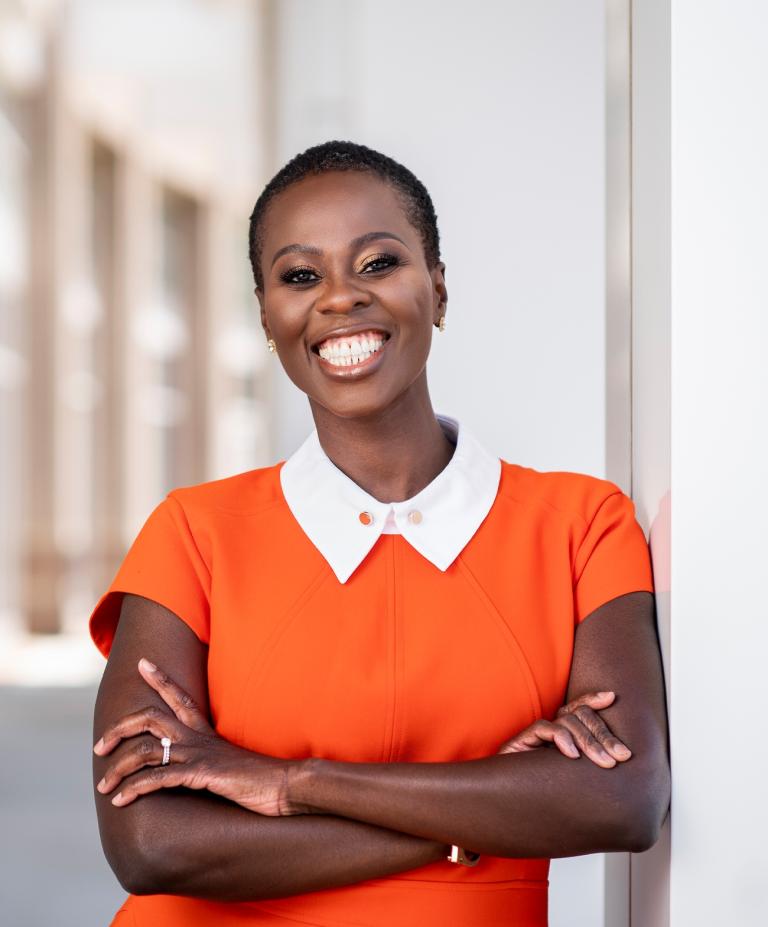Plastic Surgery: A Science and an Art
A conversation with Dzifa Kpodzo, MD ’06
- 2 minute read
- Profile
Dzifa Kpodzo, MD ’06
Chief, Division of Plastic and Reconstructive Surgery
Albany Medical College

Dzifa Kpodzo, MD ’06
Chief, Division of Plastic and Reconstructive Surgery
Albany Medical College
Dzifa Kpodzo didn’t expect to end up in plastic surgery. In fact, she entered HMS “determined not to be a surgeon. It was the only thing I thought I would never do.”
However, that all changed during her first surgical experience, when she placed her hand on a patient’s aorta. “That was it. Feeling someone’s blood circulating under my hand was unbelievable,” she recalls. “People let you into their lives in a whole different way as a surgeon.”
Her training at HMS was the first step in an impressive career arc that recently led to a new job: chief of the Division of Plastic and Reconstructive Surgery at Albany Medical College.
Kpodzo describes her experience at HMS as one largely shaped by people: her classmates, who remain close friends and confidants, as well as her many mentors in surgery and medical education at the School. “The common thread was their level of engagement and their passion for education. These are people who are so brilliant and talented, and they took the time to listen and give advice.”
There are many reasons Kpodzo loves plastic surgery: the detail and discipline of the work; the chance to see results unfold before her eyes; and the opportunity to operate on every body part and tissue type. However, asking her why she chose plastic surgery is akin to “asking somebody why they fall in love with someone. It’s this visceral thing. Plastic surgery just fits me.”
Kpodzo considers her patients to be her most important collaborators. “I have to listen and talk to patients to understand and elucidate and interpret what their wishes are,” she says. She also feels her specialty exists at the intersection of medicine and art: She applies her creativity within the basic surgical parameters to achieve a result that is aesthetic and functional and suits the individual. “Every body has its art,” she explains, and it is her job to connect the two.
This is especially true in one of her surgical passions, top surgery for transgender patients, which usually involves removing breast tissue to achieve a more typically masculine appearance. When performing top surgery, she says, she has the privilege of “helping patients really reflect who they are on the inside. It’s pretty special to come along for that journey.” When Kpodzo first became interested in top surgery, she turned to Richard Bartlett, an HMS assistant professor of surgery, part-time, at Beth Israel Deaconess Medical Center, for additional training. One of her current goals is to create a multidisciplinary health care experience for transgender patients.
Kpodzo considers relationships and talking to people to be central to everything she does. Having grown up all over the world, she came to realize that “human beings at their core are pretty straightforward and have consistent desires, beliefs, and values.”This notion, she says, helps her whether she is mentoring a resident or counseling a patient.
Kpodzo credits her mother, who moved from Ghana to Germany to become a dentist and oral surgeon in the 1970s, with showing her what is possible. “There are always challenges for me being a Black woman. I am never the person anybody is expecting in the room. But I think about women like my mother who have paved the way and that’s a huge motivation.”
Catherine Caruso is a science writer in the HMS Office of Communications and External Relations.
Image: Justin Chan